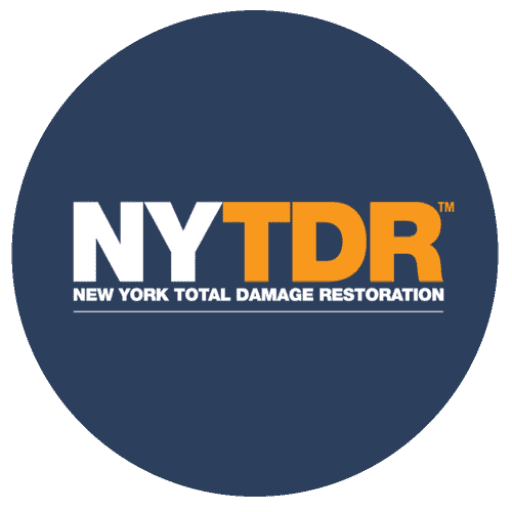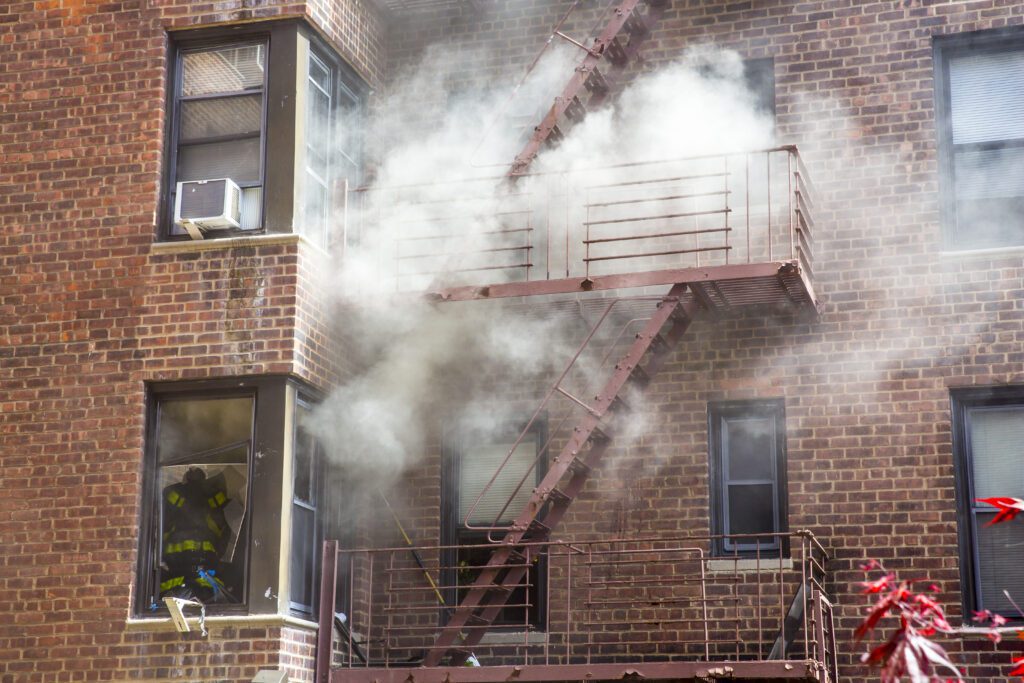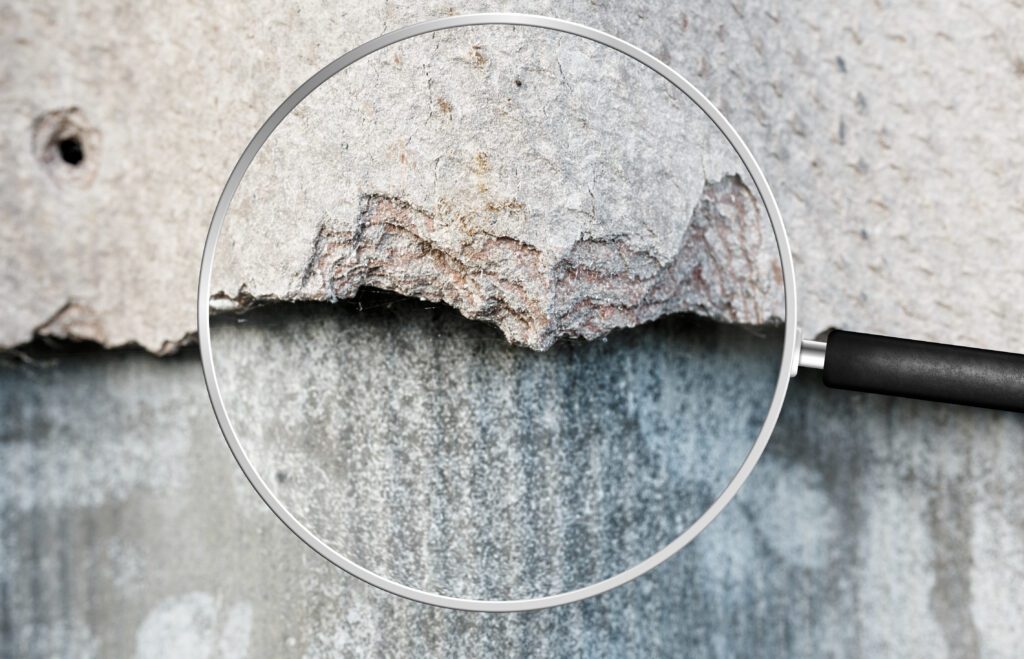A Fire-Safe Thanksgiving: A Special Message from NYTDR

Dear Valued Clients, As we gather around the table to give thanks for the joys and blessings of the season, NYTDR: New York Total Damage Restoration extends warm wishes for a Happy Thanksgiving to you and your families. May this special time be filled with laughter, love, and the delicious aroma of home-cooked meals. Thanksgiving is synonymous with spending quality time in the kitchen, preparing and sharing meals with our nearest and dearest. However, it’s crucial to remember that the hustle and bustle of holiday cooking can sometimes lead to accidents, particularly when it comes to kitchen appliances. As you create lasting memories this Thanksgiving, we want to remind you to stay vigilant and take precautions to prevent fire damage. At NYTDR, your safety is our top priority. We understand that accidents happen, and in the unfortunate event of fire damage, our team is here to support you every step of the way. This Thanksgiving season, we want to offer a friendly reminder to double-check your kitchen appliances and ensure they are turned off when not in use. Taking a few extra moments to be cautious can go a long way in preventing potential disasters. However, if the unexpected does occur, NYTDR is ready to step in and assist you in the restoration process. We understand that dealing with fire damage can be overwhelming, both emotionally and logistically. Our team is committed to providing a helping hand during these challenging times. In the spirit of giving thanks, NYTDR is pleased to offer our clients a free consultation in the event of fire damage. Our experienced professionals will guide you through the insurance process, helping you navigate the complexities and ensuring that you receive the support you need. From there, we’ll seamlessly transition into the restoration phase, working diligently to restore your home to its pre-damaged state. Our comprehensive restoration services cover everything from assessing the extent of the damage to executing a detailed plan for restoration. We pride ourselves on our efficiency, expertise, and commitment to delivering results that exceed expectations. As you enjoy the warmth and togetherness of Thanksgiving, know that NYTDR is here to support you in times of need. From our family to yours, we wish you a safe, joyful, and Happy Thanksgiving. Sincerely, NYTDR: New York Total Damage Restoration
Apartment Restoration Process

Apartments in New York City are not just living spaces; they are a reflection of your lifestyle and personality. Whether your apartment has suffered from damage or is simply in need of a makeover, the restoration process is an exciting opportunity to rejuvenate your space. At NYTDR (New York Total Damage Restoration), we’re your go-to team for the design, planning, and construction of your apartment restoration project. Let’s take a closer look at the steps involved in the apartment restoration process. Assessment and Consultation: The restoration process begins with a comprehensive assessment of your apartment. Whether your space has experienced damage due to water, fire, or structural issues, our team of experts will conduct a thorough evaluation. We will discuss your vision and requirements, including your aesthetic preferences, functional needs, and budget constraints. Design and Planning: At NYTDR, we understand the importance of design and planning in the restoration process. Our skilled designers will work closely with you to create a customized plan that aligns with your vision. We’ll take your ideas and turn them into detailed blueprints that include layouts, material choices, color schemes, and more. This phase is essential to ensure that the final result is precisely what you desire. Restoration and Construction: Once the design and planning are complete, our skilled construction team takes over. Our experienced workers will handle every aspect of the restoration, from demolition to reconstruction. We’ll use the latest construction techniques and materials to ensure a high-quality and long-lasting result. Our goal is to bring your vision to life, whether that involves repairing structural damage, enhancing functionality, or simply updating the look of your apartment. Damage Restoration: If your apartment has suffered from damage, such as water damage, fire damage, or mold growth, we have specialized teams to address these issues. We will handle damage restoration efficiently and effectively, ensuring that your apartment is not only aesthetically pleasing but also safe and healthy. Quality Control: Quality control is a top priority at NYTDR. We conduct rigorous inspections throughout the restoration process to ensure that everything is proceeding according to plan. We pay attention to the smallest details to guarantee that the final result meets our high standards and your expectations. Completion and Handover: Once the apartment restoration is complete, we’ll conduct a final walkthrough with you to ensure your satisfaction. We’ll address any remaining concerns and make sure that every detail is as you envisioned. Then, we’ll hand over your fully restored apartment to you, ready for you to enjoy and create new memories. Why Choose NYTDR: NYTDR is your all-in-one solution for apartment restoration in New York City. With our team of experienced designers, skilled workers, and specialized damage restoration teams, we can handle any project, whether it’s a full-scale renovation or damage repair. We take pride in our commitment to quality, craftsmanship, and customer satisfaction. Contact NYTDR Today: Ready to embark on your apartment restoration journey? Contact NYTDR today to get started. We look forward to working with you to transform your apartment into a space that reflects your style, needs, and aspirations. Your dream apartment is just a consultation away!
Top 10 Home Insurance Companies in NYC: Protecting Your Home and Peace of Mind

Owning a home in the bustling city of New York comes with its unique set of joys and challenges. While the skyline views and vibrant neighborhoods are unmatched, it’s essential to secure your investment and cherished belongings with a reliable home insurance policy. To help you navigate through the options available, we’ve compiled a list of the top 10 home insurance companies in NYC. 1. Chubb Chubb is renowned for its high-end and comprehensive coverage options. They cater to the needs of affluent homeowners who seek tailored policies with extensive protection. Chubb’s personalized approach and exceptional customer service make them a top choice for those requiring specialized coverage for high-value properties and valuable possessions. 2. USAA USAA has consistently received high marks for customer satisfaction and reliability. While it primarily serves military personnel and their families, if you qualify for membership, you can enjoy competitive rates and a variety of coverage options. USAA’s commitment to service and support sets them apart in the insurance industry. 3. Geico Famous for their witty commercials, Geico is also a major player in the home insurance market. While they are best known for their auto insurance, Geico offers affordable and accessible home insurance policies with customizable coverage options to protect your NYC residence. 4. Nationwide Nationwide’s reputation for dependable and flexible policies extends to their home insurance offerings. Their comprehensive coverage options, competitive rates, and excellent customer service make them a strong contender for NYC homeowners seeking reliable protection. 5. Allstate With a vast network of local agents, Allstate provides personalized service for homeowners in New York City. Their extensive range of coverage options and customizable policies allow you to tailor insurance to meet your specific needs. 6. State Farm State Farm is a household name across the United States, known for its strong financial stability and vast network of agents. They offer a variety of home insurance options, making it easy for NYC residents to find a policy that suits their requirements. 7. Amica Amica consistently ranks highly in customer satisfaction surveys. Their focus on exceptional customer service and straightforward policies makes them a popular choice for homeowners looking for a hassle-free insurance experience. 8. Travelers Travelers Insurance provides a diverse range of coverage options, making it suitable for homeowners seeking both standard and specialized coverage. Their strong financial stability and track record of prompt claim processing contribute to their popularity in the insurance market. 9. Liberty Mutual Liberty Mutual offers a variety of home insurance policies that cater to different budgets and coverage needs. Their competitive rates and various discount opportunities make them an attractive option for NYC homeowners. 10. Lemonade Lemonade is an innovative insurance provider that operates entirely online. Known for its quick and easy application process and transparent policies, Lemonade offers affordable home insurance options for tech-savvy homeowners in NYC. Before making a decision, it’s crucial to research each insurance company thoroughly, comparing coverage options, rates, and customer reviews. Remember, the best home insurance policy for you might differ based on your specific needs and budget. By investing in a reliable home insurance policy, you can gain peace of mind knowing that your beloved NYC home is protected against unexpected events.
The Human Touch: How NYTDR Supports Homeowners Throughout the Restoration Journey

When disaster strikes, it leaves homeowners feeling overwhelmed and vulnerable. Whether it’s a fire, flood, or other unforeseen calamities, the emotional toll can be immense. At NYTDR (New York Total Damage Restoration), we understand that restoring a damaged home is not just about fixing physical structures; it’s about rebuilding lives and providing a sense of security during challenging times. In this blog post, we delve into how NYTDR extends a compassionate and supportive hand to homeowners throughout the restoration journey, making the process as smooth and reassuring as possible. Empathy at the Forefront: At NYTDR, we believe that empathy forms the bedrock of our services. Our team of restoration experts understands the distress and upheaval that homeowners face when their homes suffer damage. As soon as we receive a call for assistance, our priority is to reach out to the affected homeowners promptly. Our compassionate customer support team listens attentively, offering comfort and reassurance, while swiftly mobilizing the restoration crew to assess the situation. Clear Communication: Clarity and transparency are vital when dealing with homeowners during distressing times. Our dedicated project managers take the time to explain the restoration process step-by-step, providing homeowners with a clear understanding of what to expect. From the initial assessment to the final touches of the restoration, we keep homeowners informed about the progress and any potential challenges that may arise. Personalized Solutions: Every home and homeowner is unique, and we recognize that a one-size-fits-all approach does not work in the restoration process. At NYTDR, we tailor our solutions to meet the specific needs and preferences of each homeowner. We take into account factors such as budget, timelines, and personal belongings, ensuring a customized restoration plan that aligns with the homeowners’ requirements. Emotional Support: Home damage can evoke a range of emotions, from frustration and anxiety to grief and sadness. Our restoration experts are not only skilled professionals but also compassionate individuals who understand the emotional toll of such events. We are there to lend a listening ear, providing emotional support to homeowners as they navigate the restoration journey. Minimizing Disruption: Home restoration projects can be disruptive to daily life, and we strive to minimize this disruption as much as possible. Our team works efficiently and swiftly, prioritizing tasks to get homeowners back to their regular routines as soon as feasible. Throughout the restoration process, we take care to maintain a clean and safe working environment, respecting the homeowners’ space and belongings. Going the Extra Mile: At NYTDR, we take pride in going above and beyond to exceed our clients’ expectations. We understand that restoring a home is not just about fixing the visible damage but also addressing hidden issues that may arise during the process. Our experts conduct thorough inspections to identify and resolve potential problems, ensuring a comprehensive and long-lasting restoration. Conclusion: At NYTDR, we believe that providing the human touch is essential in delivering exceptional home restoration services. Beyond repairing damaged structures, our mission is to bring hope, compassion, and support to homeowners during times of crisis. By placing empathy and clear communication at the forefront of our services, we strive to alleviate the stress of the restoration journey, allowing homeowners to focus on rebuilding their lives and embracing a brighter future.
Understanding the Insurance Claim Process: A Comprehensive Guide with NYTDR

Insurance coverage provides vital financial protection when unexpected events such as fire, water damage, or natural disasters occur. However, navigating the insurance claim process can be complex and overwhelming for policyholders. At New York Total Damage Restoration (NYTDR), we specialize in assisting homeowners with the insurance claim process and restoring their damaged homes to their previous or even better condition. In this comprehensive guide, we will walk you through the various steps involved in filing an insurance claim and working with NYTDR as your trusted contractor and advocate. Step 1: Reporting the Incident and Engaging NYTDR Promptly reporting the incident to your insurance company is crucial, and it’s equally important to contact NYTDR to begin the process of assistance. We will guide you through the initial stages of the claim process, help you gather essential information, and ensure accurate documentation of the damage. Step 2: Understanding Your Policy Understanding the details of your insurance policy is key to a smooth claims process. We will help you navigate policy language, coverage limits, deductibles, and exclusions, ensuring you understand the terms and conditions that affect your claim. Step 3: Collaborating with Your Insurance Adjuster While NYTDR is not an adjuster, we will collaborate with your insurance adjuster to assess the damage and determine the claim amount. Our team will be present during the inspection, providing insights into the extent of the damage and advocating for a fair assessment. Step 4: Documenting the Damage with NYTDR’s Expertise Comprehensive documentation is crucial for a successful claim. With our expertise, we will guide you in documenting the damage through photographs, videos, and written descriptions. Our meticulous approach ensures that no detail is overlooked, strengthening your claim. Step 5: Mitigating Further Damage and Preparing for Restoration Taking immediate steps to prevent further damage is essential. We will offer practical advice on mitigating damage and provide recommendations for temporary repairs or mitigation services. By acting swiftly, we safeguard your property and prepare for the restoration process. Step 6: Working with NYTDR – Your Trusted Restoration Contractors At NYTDR, we take pride in being your trusted restoration contractors throughout the claim process. Our team of skilled professionals is dedicated to restoring your home to its previous or improved condition. We will guide you through every aspect of the restoration journey, ensuring that your home is restored to its full glory. Step 7: Effective Communication and Advocacy Open and effective communication with both your insurance company and NYTDR is vital throughout the claims process. We will act as your advocate, facilitating communication and serving as a liaison between you and your insurance provider. Our goal is to ensure that your needs are effectively communicated and addressed. Step 8: Reviewing the Settlement Offer with NYTDR’s Guidance When your insurance company presents a settlement offer, we will guide you in evaluating it carefully. Our experienced team will provide insights and help you understand the offer, ensuring that you receive a fair and adequate settlement for your losses. We can also provide professional advice, if needed, to assist you in negotiating a better settlement. Step 9: Rebuilding and Restoration with NYTDR’s Expertise Once your claim is settled, the process of rebuilding and restoring your property begins. NYTDR’s team of experts will work diligently to restore your home to its previous or even better condition. We will oversee the reconstruction phase, coordinating with our skilled contractors to ensure a seamless restoration process. Your satisfaction and peace of mind are our top priorities. Conclusion: Navigating the insurance claim process can be overwhelming, but with NYTDR as your partner, you can have confidence and peace of mind. At NYTDR, we are committed to being your trusted partner and advocate throughout the insurance claim and restoration process. With our expertise as restoration contractors, we will guide you through each step, from reporting the incident to coordinating the restoration and ensuring a seamless experience. Our skilled team will work tirelessly to restore your home to its previous or improved condition, utilizing reputable contractors, providing accurate estimates, and overseeing the entire restoration process. We understand the complexities of insurance claims and will streamline interactions with your insurance provider, handling documentation and communication on your behalf. With NYTDR by your side, you can have peace of mind knowing that your home is in capable hands. We are dedicated to delivering outstanding results that exceed your expectations, providing regular updates and ensuring transparency throughout the restoration journey. Choose NYTDR for a seamless, stress-free, and successful insurance claim and restoration experience. Let us restore your damaged home to its full glory, allowing you to move forward with confidence and renewed comfort in your living space.
The First Steps After a Home Fire in NYC

New York City is a fantastic place to live. Unfortunately, home fires are common, mainly when high temperatures cause vegetation to dry. Based on data from Red Cross, small house fires are the most prevalent disaster. The aftermath of a home fire is often devastating, damaging the house inside and out. Even if the fire doesn’t produce wild flames, the heat can affect glass windows, causing the paint to peel and blister while melting plastic components. If your home suffered a fire, you might feel overwhelmed and wonder where to start, which is perfectly normal. This guide aims to walk you through the first steps to give you the confidence to rebuild your life. What to Do After a House Fire § Ensure Your Loved Ones Are Safe In all the confusion, it’s easy to forget basic things such as checking in with your family to ensure everyone is okay. If several people were at home when the fire started, it could be a traumatizing experience for them, especially if some were children. Take time to reach out to your loved ones, even those not in the accident. If none of your family members is close, contact close friends so you have support as you plan for fire damage restoration. If your home is a rental, let the property owner or manager know immediately before you start the recovery process. § Figure Out House Fire Insurance After ensuring everyone is okay, the next step is contacting your homeowner’s insurance provider. Doing so allows you to start documenting the event for the insurance claim process. The insurance agent can help you find emergency accommodation where your policy will cover your living expenses. You can then contact experienced fire restoration professionals from NYTDR to handle the smoke, fire, and water damage. The experts will collaborate with your insurance provider so you can focus on getting your life back together. § Determine the Extent of the Fire Damage On average, the temperature in a house fire often reaches 100 degrees at ground level and about 600 degrees at eye level. Such intense heat is enough to compromise your home’s structural integrity. The best move is to consult NYTDR’s fire damage restoration experts to help you assess the extent of the damage and determine the best course of action. The experienced professionals will remove the unsalvageable items, clean up and repair the critical areas. They’ll also manage water mitigation to reduce water damage after firefighters extinguish the fire. § Determine Whether Your Home is Safe to Re-enter It’s best to avoid entering your house after a fire until the fire department gives you the go-ahead. Fires can re-ignite even when they seem extinguished, and your roof or floor can give out due to hidden damage. Inhaling soot and smoke for extended periods can also pose a health risk. § Organize Your Possessions If it’s safe to re-enter, start by retrieving valuable items such as documents like passports and certificates. Separate the damaged items so it’s easier to list the items your insurance provider should replace. Fire restoration experts can help you sort your belongings and salvage undamaged items. They’ll also assist with professional cleaning to remove all traces of soot and smoke. § Find Temporary Accommodation to Allow Restoration In most cases, the homeowner’s insurance policy covers shelter, clothing, and food for you and your loved ones for a particular period. If you don’t have insurance coverage, you can contact local disaster relief services like the American Red Cross, friends, relatives, or church to help you find suitable accommodations as the restoration process proceeds. You Are Not Alone; NYKB is Here to Help Dealing with the aftermath of a house fire can become challenging and overwhelming for everyone involved. The smoke, heat, and fire damages are often difficult to clean and restore. You likely also have to deal with water damage caused by the water used to extinguish the fire. NYTDR fire damage restoration experts have the right tools, training, and experience to handle such repairs. You don’t have to deal with your insurance provider alone; these professionals will manage the negotiations to ensure you get what you deserve. If your home suffered a fire, you can rest assured the experts will clean, repair and restore it to its former glory. In fact, it may be in a better state, thanks to the high-quality materials and fixtures NYTDR uses.
7 Mistakes to Avoid While Buying a Home Insurance Policy

You need reliable insurance coverage to safeguard your home if you own one. A home insurance policy aims to rebuild your home and replace your possessions in case of a significant loss. Whether acquiring a policy for a new home, renewing an existing one, or making a first-time purchase, it is crucial to consider your decision seriously. However, choosing a house insurance coverage can be challenging. There are many insurance companies and policies and endless details to consider. Before it’s time to make insurance claims, many homeowners are unaware of their home insurance specifics. When purchasing home insurance coverage, avoid making these seven expensive mistakes. 1. Underinsuring Your Home According to insurance experts, one of the biggest mistakes people make is failing to buy adequate insurance that will cover the expense of rebuilding their homes in the event of destruction. With the right insurance, paying a modest monthly premium is brilliant. But if you forgo coverage for a cheaper rate, you may pay for it later. Some homeowners buy the bare minimum of insurance, just enough to meet their mortgage needs. Such a move is a costly mistake should you ever file a claim. The expense of underinsurance may be far greater than your monthly premium savings. Some policyholders also insure an amount equal to their home’s market value. However, this amount might be significantly lower than the actual cost of reconstructing your home, including labor and supplies, which could increase considerably in the aftermath of a hurricane due to high demand and limited supply. Calculate the cost of rebuilding your home to avoid making this error. Check to see whether your coverage comes close to that sum. If it’s not, step up your premiums. Remember to factor in the price you’d incur to replace the unique elements of your home, like marble floors, when evaluating the cost of rebuilding. Further, ensure you have enough insurance to cover your valuables, such as jewelry, artwork, and antiques. 2. Assuming You Have One Flat Deductible A deductible is a payout you need to make before your insurance policy starts covering claims. Some policies contain percentage deductibles for specific perils, even though your insurance may have a flat rate deductible. Depending on what you indicated when purchasing the coverage, you might think your maximum out-of-pocket expense would be $600, $1,000, or something else. Wrong. The deductible is often a percentage of your policy in cases of named perils such as storms or other significant weather occurrences, such as earthquakes and windstorms. In the event of a flood, it may amount to 1 to 5% of your insured value, whereas in an earthquake, it could amount to 10 to 15% of the coverage. Therefore, if your home has coverage for $200,000 and you suffer flood-related damages, your claim could result in a $10,000 deductible. Consult your insurance agent regarding options with one flat rate deductible before picking a home insurance policy. However, this can be more expensive and difficult to find. 3. Not Including Flood Insurance Coverage When hurricanes, tropical storms, or torrential rains strike, flood insurance protects your home and possessions from floods and storm surges. Most homeowners’ insurance policies, however, exclude flood coverage. Unfortunately, many people are unaware of this fact. You can get flood insurance from the National Flood Insurance Program. Talk to your agent about every detail of the policy so you know the coverage provided and the other policies you can purchase to maximize your protection. Adding flood insurance to your home insurance policy would be worthwhile if you reside in a flood-prone area or low-lying terrain. Even a small amount of water can result in damage costing several thousand dollars. Additionally, homeowners may erroneously believe their policy covers; Earthquake Sewage backup Mold 4. Not Understanding Your Insurance Terms [https://pixabay.com/photos/mortgage-house-contract-sign-home-5266520/] Knowing the distinction between replacement costs and actual cash value could save you money if you ever need to file an insurance claim. When you file a claim, actual cash value pays out the value of your possessions at the time of the claim. This implies that reimbursement won’t cover the expense of replacing such items or the price you paid. If you select a coverage that pays replacement costs, you will have the money to replace lost items. Additionally, insurance firms have long since abandoned “all risk” policies, which were costly for residents of states with significant exposure. Although it does not act as a warranty plan, your homeowner’s insurance safeguards you in the case of a calamity. Spend some time learning and understanding the contents of your cover. 5. Failing to Bundle Your Policies One of the mistakes you can make when purchasing home insurance is not taking advantage of bundling policies. Your insurance agent can help you buy various insurance plans in one location. These may include your motor vehicle insurance plan, coverage for your most precious possessions, and home insurance. Your insurance provider may offer substantial discounts whenever you bundle multiple plans. You can also tailor your coverage to suit your lifestyle by adding other policies to your standard house insurance policy. By bundling your plans into a single multipolicy, you may save a significant amount of money on insurance over time. You may save up to 25% on your overall costs when purchasing many policies simultaneously. Over time, you will also save a ton of time because having your insurer handle all your needs in one place eliminates the need for many phone calls, discussions, and general back-and-forth with different insurance companies. 6. Settling for The Wrong Insurance Company Home insurance aims to provide protection should you lose your house. You may end up with the coverage you don’t need if you pick an insurance provider based solely on price or proximity to you. Before making a decision, do your homework on local insurance providers, meet with your agent, and ensure you fully understand the terms of your policy. You need to be sure that the insurance company you’re dealing with is reputable and has a
How to Identify Asbestos in Your Home

Asbestos is a mineral found naturally in certain types of rock worldwide. From the beginning of the 1940s to the 1970s, asbestos was widely used in manufacturing products, particularly building materials. This was because of its; Fire resistance Durability Reasonably low price Sadly, it was later discovered that exposure to asbestos fibers presents severe risks to respiratory health. Exposure to asbestos fibers can also lead to other health complications; asbestos Lung cancer Non-cancerous lung disease There is no cure for these illnesses, which all result in death. Places You Can Find Asbestos in Your Home? The United States outlawed spray-on asbestos and several other uses in the late 1970s, which significantly reduced the use of asbestos. However, asbestos is still present in some older houses. In such homes, asbestos may be present in various construction materials like paint, floor tiles, and insulation. Furthermore, before the 1980s, many American homes and public buildings, including schools and government housing, contained asbestos in the following materials: Some vinyl floor tiles Asbestos insulation around steam lines Cement asbestos board siding/under sheeting Asbestos roofing felt for shingles textured paintestos-containing vermiculite insulation Vinyl floor tiles Although many residential applications for asbestos are no longer allowed, it is still permitted in the US for over a handful of other applications. Signs Your Home Might Have Asbestos It is difficult to detect asbestos, which can often hide in plain view inside your house. Asbestos can appear as green, brown, or blue fluffy fibers. However, tiny fragments can also be present in materials such as cement or plastic, making them difficult to identify by yourself. Asbestos is hazardous when disturbed, so you should never dig around to look for it. While you can gather samples for testing, it is much better if an asbestos expert handles the task. Here are a few signs your house might contain asbestos: It has been around since the early 1980s Has corrugated roofing It has an older cement water tank It contains vinyl flooring or millboard included between 1952 and 1982 Has vermiculite insulation Have walls or other interior surfaces made of cement sheets Everyday Asbestos Exposure at Home The following are some of the common ways Asbestos exposure can occur at home ways: DIY home improvements, such as attic remodeling Replacing a worn-out pipeline. Drilling holes through drywall Vinyl floor tile removal Cutting Insulation on Pipes Removal of popcorn ceiling When to Carry Out Asbestos Testing for Your Home [https://pixabay.com/photos/sign-caution-asbestos-spray-paint-3789310/] In the 20th century, constructors mainly used asbestos in building materials and home insulation, and it’s easy to see why. Asbestos is durable and can resist heat, corrosion, and electricity. However, over the years, studies have found asbestos to be highly toxic, which has led to its ban. Statistics show that asbestos-related diseases causes 255,000 deaths annually. These illnesses include: Stomach tumors Asbestosis Stroke Pleural plaques Most homeowners might never need to have their houses tested for asbestos. Simply having asbestos in your house is not dangerous, as asbestos fibers are only a health hazard when inhaled. However, you should hire an expert to conduct an asbestos test if you; Intend to do construction work Observe damage to some of the drywall, siding, or piping Plan to remodel Have other concerns. How Asbestos Testing Works The length of the inspection procedure will depend on how big your house is. It may take hours or some days. The asbestos expert will do the following while inspecting your home; Turn off the heating and cooling systems to avoid the dispersal of any particles. Cover the surface beneath the test area with a solution of water and soap to minimize the discharge of fibers. Take tiny bits of potentially hazardous material. The aim is to disturb it as least as possible. Place the contaminated material into a secured container for shipping Clean the inspection area and throw away any remaining materials Gather any loose materials or fibers, not in the covered area with a wet cloth Submit the sample material to an accredited laboratory for testing. What to Do If Your Home Has Asbestos Following the discovery of asbestos in your home, your next course of action will depend on the following; The type of asbestos Its location Whether friable or not Friable asbestos could readily disintegrate, releasing hazardous airborne particles. However, some materials containing asbestos are non-friable and are still secure if they’re in excellent shape. Your contracted asbestos expert may then decide to remove the asbestos or repair the affected areas with an encapsulant or covering, depending on the state of the asbestos. You will need to leave the house until an air test shows clear of all residue should the expert find it necessary to remove the asbestos. Asbestos removal is typically more expensive than a repair, but if you first repair, asbestos removal may be more challenging and costly in the future. 1. Enscapulation (sealing) Encapsulation is the application of a sealant to the material, which either coats the asbestos material or bonds the asbestos fibers to prevent fiber release. This method is efficient for furnace, pipe, and boiler insulation. 2. Covering(enclosure) Covering entails wrapping a jacket or protective wrap around the asbestos-containing substance to prevent fiber release. Never try to remove asbestos yourself from your house, as improper asbestos handling may create additional problems. You should always engage a specialist. Asbestos removal may seem expensive, but it is worth it. The average cost of asbestos removal ranges from $1,100 to $2,800. Guidelines for A Safe Asbestos Removal Obtain written confirmation from the contractor that they complied with all applicable asbestos removal and disposal laws Ensure to engage only contractors granted state authorization to do asbestos abatement work. Request references and recently completed comparable projects. Request a disposal manifest before settling the final invoice to confirm that the contractor will dispose of the material in a landfill authorized to accept asbestos. Find out if the company has ever had safety violations. Contact the local air pollution control board, the organization in charge of worker safety, and the Better Business Bureau. Confirm the contractor
4 Holiday Decorating Tips to Keep Your Home Damage-Free All Season

Christmas is always exciting as we spend time with our loved ones, exchange gifts, and wrap up the year. Unfortunately, the holidays can present unique hazards as we decorate our homes. In fact, Christmas-related injuries affect 18,000 Americans annually, not to mention the potential home damage from fire and smoke. Keep these four tips in mind as you put up and take down your Christmas decorations this year. 1. Watch Out for Fire Hazards During the holidays, the primary sources of fire hazards at home are Christmas trees, lighting decorations, and kitchens. Home damage from fires is easily avoidable if you follow the tips below: · Choose the Right Christmas Tree If you want a natural or living Christmas tree, keep it hydrated to prevent it from accidentally catching fire. If you choose an artificial Christmas tree, check its fire rating. A fireproof artificial tree should have a UL rating indicating that it’s tested and certified to withstand heat. · Choose the Right Placement Whether natural or artificial, keep your Christmas tree close to your electrical outlet to prevent tripping hazards from power strips and lighting cords. Also, place your tree away from heat sources like the fireplace or room heaters. · Use Flameless Candles Opt for battery-powered flameless candles to add a festive glow to your Christmas decorations. Open flames can damage homes if left unattended, accidentally knocked down, or placed near flammable items. · Choose Christmas Lights Carefully It’s easy to overload your power supply with Christmas lights indoors and outdoors. Use heavy-duty power strips and check your lights’ wattage to prevent an electrical fire. Check that there are no empty bulb sockets in your string lights. Turn off the Christmas lights when you sleep or leave the house. · Decorate the Fireplace Mindfully Consider the weight of wreaths, garlands, and stockings as you hang them around your fireplace. Secure them with fishing lines, self-adhesive hangers, and zip ties to support these decorations. · Use the Right Disposal Methods Don’t burn gift wrappers or your Christmas tree in your fireplace or wood stove, or you may risk starting a fire that you can’t control. Instead, put away waste papers and boxes for recycling. Consider chopping and drying your real Christmas tree for firewood for an outdoor bonfire. You can also repurpose an artificial tree to create centerpieces, napkin rings, or other creative DIYs. · Pay More Attention When Cooking As you prepare that wonderful Christmas lunch or dinner, watch out for distractions from children and guests. Keep all potholders, paper towels, dish towels, and other flammable objects away from the stovetop. Don’t leave any pots unattended. Note: Outdoor Christmas decorations require additional safety precautions: Keep power strips and lights away from snow or standing water. Use decorations rated for outdoor use only, and don’t overload outlets to avoid overheating and fire. Fasten all lights and decorations securely to your house or trees to keep them from wind damage. If you’re using spotlights, keep them well-ventilated, safe from the elements, and away from flammable objects. In addition, keep all decorations at least 10 feet away from power lines. These precautions prevent home damage from electrical fire hazards outside your home. 2. Protect Your Floors and Carpets The floor takes a lot of home damage during the holidays, not just from the additional foot traffic but from Christmas trees. A Christmas tree tends to leave indentations in the carpet and scratch wooden floors. To avoid expensive damage restoration after the holidays, keep these tips in mind: Place your Christmas tree in a sturdy basket to protect the floor. Disguise the basket with wrapping paper or a tree skirt. Use a plywood slab underneath the Christmas tree, either on its own or with a waterproof, non-slip mat. Water your Christmas tree carefully to prevent excess moisture from spreading into the surrounding floor or carpet. Seal glittery decorations with a clear sealer or hairspray to keep the sparkles out of the floors and carpets. Place Christmas-themed area rugs where you expect heavy traffic, like doorways or at your main entrance. These rugs keep dirt and water off your floors and prevent scuff marks and scratches. If you plan to host many parties during the holiday season, use gentle cleaners to keep your floors spotless. Soap and water are often enough to remove spills and stains from surfaces. Avoid harsh cleaners that can damage hardwood floors and tile grout. 3. Protect Your Walls and Windows Think about how you’ll decorate your walls and windows without causing any home damage. Adhesives like duct tape, nails, and screws can cost you thousands of dollars in damage restoration if they ruin the paint, insulation, or drywall. Try the tips below instead: Use self-adhesive hooks or hanging strips that remove easily from the walls. Check the weight rating to avoid overloading them with Christmas decorations. Use suction hooks on smooth surfaces like window glass and tiles instead of sticker hooks. Hang decorations on clear fishing lines with pegs or clips, such as Christmas stockings and cards. You only need to secure two ends of the line rather than use nails or screws. Removable mounting putty is excellent for wall decorations since it can hold up to a pound of weight and leaves no residue. You can also reuse it after the decorations come down. Use water-based spray snow on your windows that’s easy to clean. Cover the window frame and surrounding wall and floor surfaces before applying the artificial snow. 4. Keep Children and Pets Safe While Decorating Curious cats and dogs always want to play with your Christmas tree decorations and lights, which can lead to accidental home damage. They may pull down the tree or drag string lights around the house and trigger an electrical fire. Children also love participating in the festive decorations but keep an eye on them for safety. If this is your first Christmas with a baby or four-legged friend, these tips can help keep them safe during Christmas decoration:
What You Should Know Before A Kitchen Restoration

When it comes to water, fire, and smoke damage, the kitchen is the most vulnerable part of the home. Leaking plumbing, faulty appliances, or even cooking accidents can damage your kitchen. But you can restore a damaged kitchen to its former glory or create an entirely new space. Before you embark on a kitchen restoration, here are some essential things you should know. Top 5 Factors to Consider Before A Kitchen Restoration 1. Budget Damage restoration typically means a significant and unexpected expense for homeowners. But before you get overwhelmed by renovation costs, figure out the following: How much you can spend – what’s in the bank How much you wish you could pay – this is a great way to get creative with your kitchen choices What you absolutely must have in your restored kitchen How much of the restoration work can you do yourself versus hiring a contractor How much you can spare for hidden costs – you may discover mold, pests, or structural issues once the renovation is underway 2. Time Frame The general rule in home renovations is that it takes twice as long as you’d expect. Know how much time you can give to your kitchen restoration, including if it drags on for an extra week or two. Next, find a contractor who can do the project in half the time. This way, you’ll be well within your schedule if the contractor needs more time. 3. Insurance Your homeowner’s insurance can help manage the kitchen restoration costs, including repairing or replacing cabinets and appliances. You can also get reimbursed for extra living costs if you have to move out of your home for the damage restoration process. However, you must prove that the damage was due to something beyond your control, not the homeowner’s negligence, then settle for much less than you deserve. It’s better to have a damage restoration company like NYTDR handle insurance claims on your behalf. 4. Storage A kitchen restoration is a chance to rethink your cabinetry in terms of style and space. Suppose you want the same cabinet material or color as before. In that case, you can elevate the design by adding extra functions like a lazy Susan or updating the pulls and handles. Also, consider maximizing wall space and corners to add extra room for your utensils and gadgets. 5. Layout Think of your kitchen with all cabinets, drawers, and appliances open. If doors bump into each other or block access to any other kitchen feature, you have a layout problem. A kitchen restoration can help you reorganize your floor plan to increase functionality, especially if your family is growing or if it’s your forever home. Speak to your contractor about future-proofing your kitchen for pregnancy and old age. What To Expect From A Kitchen Renovation It’s essential to understand the kitchen renovation process, whether you’re handing it over to a professional contractor or doing some parts yourself. Once you know what it takes, you’ll better manage your expectations and stress levels. The typical damage restoration process follows the steps below: Step 1: Demolition The damaged cabinets, floors, walls, and fixtures must go out before the new elements come into your kitchen. Don’t be tempted to DIY this step, in any case. You may interfere with the wiring and plumbing or damage your home’s structural integrity. Leave the experts to tear out your damaged kitchen and remove the debris safely. Step 2: Plumbing and Framing You’ll need to move the plumbing and frame the walls to accommodate features like a kitchen island, new sinks, or new ventilation. There’s less work involved at this stage if you opt for a replacement rather than a complete kitchen renovation. Step 3: Inspection A professional inspection ensures that everything in the walls meets building codes before adding the drywall or other finishings. A licensed kitchen restoration crew handles the assessment and gets the approvals necessary to proceed with construction. Step 4: Complete the Walls Once you pass the building inspection, the next step is to install the drywall, windows, and doors. Consider the kitchen’s insulation, so seal every crack to minimize heat loss in cold weather. Also, install the trim for the cabinets at this stage for precise fitting. Step 5: Install Cabinets, Fixtures, Countertops, And Appliances At this stage, your kitchen restoration truly comes alive. You’ll start to see your restored kitchen as it once was or watch as all the elements of your brand-new space come together. Of course, there may be some plumbing or electrical challenges here, so trust your professional contractor to solve them as they arise. Also, if you’re upgrading appliances, go for features that add value to your home, such as energy efficiency and smart devices. A Note About Flooring Depending on various factors, you can install the flooring before or after your cabinets and appliances. For example, cabinets come before installing thinner flooring like vinyl or laminate and hardwood or tile flooring. A baseboard or molding covers the gaps between the flooring and the cabinets. In contrast, cabinets come after flooring if you need to correct the floor height because of construction flaws or if you need to reach standard countertops height. Weigh the pros and cons of each flooring option as you plan your kitchen renovation. Stress-Free Professional Kitchen Restoration With NYTDR No homeowner needs the pain of property damage, but these tips can help you think things through. Save yourself the stress by choosing a professional kitchen restoration company like NYTDR to handle damage restoration from start to finish. We sort out your insurance at no extra cost and design and build your new kitchen within your schedule and budget. Our designers and contractors walk you through every step of the damage restoration process. Share your dream kitchen with us, and we’ll make it happen. Call 212.206.1300 to start your free consultation today.
